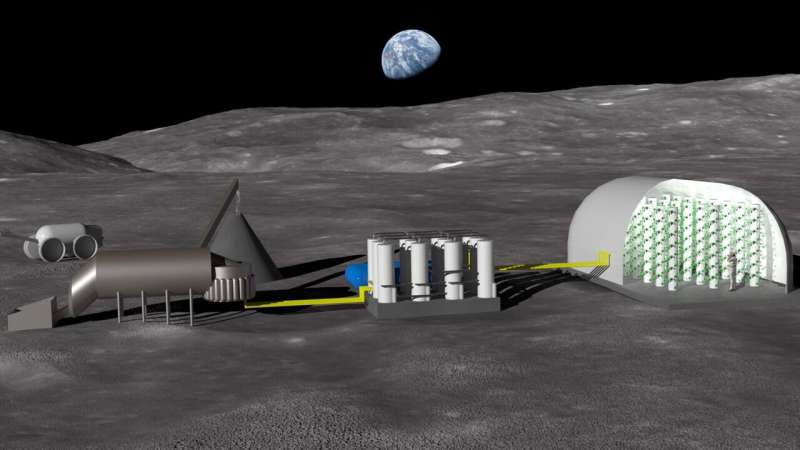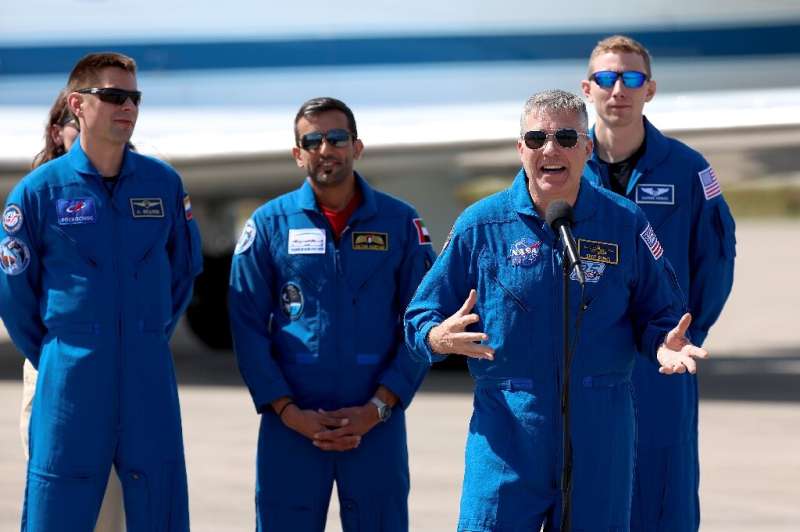
Copernical Team
CARMENES project boosts the number of known planets in the solar neighbourhood
 The CARMENES program, led by a consortium of Spanish and German research institutions, in which the Max Planck Institute for Astronomy (MPIA) is a partner, has released 20,000 observations of more than 300 stars. These measurements led to the discovery of 59 planets, with a dozen being potentially habitable. This spectroscopic data set was obtained at the Calar Alto Observatory in Spain and is n
The CARMENES program, led by a consortium of Spanish and German research institutions, in which the Max Planck Institute for Astronomy (MPIA) is a partner, has released 20,000 observations of more than 300 stars. These measurements led to the discovery of 59 planets, with a dozen being potentially habitable. This spectroscopic data set was obtained at the Calar Alto Observatory in Spain and is n "Forbidden" planet orbiting small star challenges gas giant formation theories
 A team of astronomers led by Carnegie's Shubham Kanodia has discovered an unusual planetary system in which a large gas giant planet orbits a small red dwarf star called TOI-5205. Their findings which are published in The Astronomical Journal, challenge long-held ideas about planet formation.
Smaller and cooler than our Sun, M dwarfs are the most common stars in our Milky Way galaxy. Due t
A team of astronomers led by Carnegie's Shubham Kanodia has discovered an unusual planetary system in which a large gas giant planet orbits a small red dwarf star called TOI-5205. Their findings which are published in The Astronomical Journal, challenge long-held ideas about planet formation.
Smaller and cooler than our Sun, M dwarfs are the most common stars in our Milky Way galaxy. Due t Water rich asteroids came from far outside the asteroid belt
 Where did the water that makes up Earth's oceans come from? This question has not yet been definitively answered. When Earth was formed, 4.5 billion years ago, it received a quantity of volatile substances from the primordial solar nebula, which were outgassed from the interior of the young planet during the solidification of an early magma ocean and through active volcanism. An initial atmosphe
Where did the water that makes up Earth's oceans come from? This question has not yet been definitively answered. When Earth was formed, 4.5 billion years ago, it received a quantity of volatile substances from the primordial solar nebula, which were outgassed from the interior of the young planet during the solidification of an early magma ocean and through active volcanism. An initial atmosphe Meteorite crater discovered in French winery
 Countless meteorites have struck Earth in the past and shaped the history of our planet. It is assumed, for example, that meteorites brought with them a large part of its water. The extinction of the dinosaurs might also have been triggered by the impact of a very large meteorite.
Meteorite craters which are still visible today are rare because most traces of the celestial bodies have long
Countless meteorites have struck Earth in the past and shaped the history of our planet. It is assumed, for example, that meteorites brought with them a large part of its water. The extinction of the dinosaurs might also have been triggered by the impact of a very large meteorite.
Meteorite craters which are still visible today are rare because most traces of the celestial bodies have long World's first 3D-printed rocket Terran 1 is ready for its maiden flight
 Relativity Space announced on Twitter that their expendable Terran 1 rocket has secured a launch license and is targeting liftoff on March 8 from Space Launch Complex 16 (SLC-16), Cape Canaveral Space Force Station (CCSFS), Florida. The launch window is between 1:00-4:00 p.m. ET (1800-2100 GMT).
The 110-foot (33-meter) Terran 1 will undergo a crucial launch test on the "Good Luck, Have Fun
Relativity Space announced on Twitter that their expendable Terran 1 rocket has secured a launch license and is targeting liftoff on March 8 from Space Launch Complex 16 (SLC-16), Cape Canaveral Space Force Station (CCSFS), Florida. The launch window is between 1:00-4:00 p.m. ET (1800-2100 GMT).
The 110-foot (33-meter) Terran 1 will undergo a crucial launch test on the "Good Luck, Have Fun NASA, SpaceX delay Sunday Crew-6 flight until Monday
 NASA and SpaceX announced that its manned Crew-6 flight scheduled to liftoff from the Kennedy Space Center on Sunday has been delayed 24 hours so engineers can work their way through what has been described as "minor issues."
SpaceX's capsule Endeavour was scheduled to launch on a Falcon 9 rocket Sunday evening. After a flight readiness review briefing on Tuesday afternoon, it was decid
NASA and SpaceX announced that its manned Crew-6 flight scheduled to liftoff from the Kennedy Space Center on Sunday has been delayed 24 hours so engineers can work their way through what has been described as "minor issues."
SpaceX's capsule Endeavour was scheduled to launch on a Falcon 9 rocket Sunday evening. After a flight readiness review briefing on Tuesday afternoon, it was decid Treating lunar soil to create fertilizer for growing plants on the moon

Sooner or later, settlers on the moon will have to become farmers. A new ESA Discovery project led by Norway's Solsys Mining is looking into the treatment of lunar soil to create fertilizer for growing plants.
The good news is that analysis of lunar samples returned to Earth in the past by moonwalkers and robots shows sufficient essential minerals are available for plant growth, apart from nitrogen compounds. The bad news is that lunar soil (or "regolith") compacts in the presence of water, creating problems for plant germination and root growth.
Hydroponic farming therefore offers a practical alternative; this type of agriculture involves feeding plant roots directly with nutrient-rich water, without the need for soil. The potential is still there however to put lunar regolith to work, on the basis of "in-situ resource utilization"—or living off the land.
The "Enabling Lunar In-Situ Agriculture by Producing Fertilizer from Beneficiated Regolith" project, led by Solsys Mining with Norway's Geotechnical Institute (NGI) and Centre for Interdisciplinary Research in Space (CIRiS), involves studying a combination of mechanical, chemical and biological processes to extract mineral nutrients from the regolith.
SpaceX Dragon crewed flight to ISS pushed back 24 hours

US space agency NASA and SpaceX on Tuesday pushed back by 24 hours the launch of a Falcon 9 rocket that is to carry four astronauts to the International Space Station.
NASA's Stephen Bowen and Warren Hoburg, Russia's Andrey Fedyaev and Sultan al-Neyadi of the United Arab Emirates had been scheduled to blast off for the ISS at 2:07 am (0707 GMT) Sunday.
Liftoff of the SpaceX Dragon Crew-6 from the Kennedy Space Center in Florida has now been rescheduled for 1:45 am Monday, NASA officials said.
Shaping the future of space telecommunications

ESA is inviting everyone working on space-enabled telecommunications – whether they are based in a large firm, a small start-up company or an established research institution – to help shape the future by joining a conference.
Lockheed Martin gets $1BN contract for sea-based hypersonic strike capability
 Lockheed Martin is partnering with the U.S. Navy to integrate hypersonic strike capability onto surface ships. The U.S. Navy awarded Lockheed Martin a contract worth more than $2 billion, if all options are exercised, to integrate the Conventional Prompt Strike (CPS) weapon system onto ZUMWALT-class guided missile destroyers (DDGs). CPS is a hypersonic boost-glide weapon system that enables long
Lockheed Martin is partnering with the U.S. Navy to integrate hypersonic strike capability onto surface ships. The U.S. Navy awarded Lockheed Martin a contract worth more than $2 billion, if all options are exercised, to integrate the Conventional Prompt Strike (CPS) weapon system onto ZUMWALT-class guided missile destroyers (DDGs). CPS is a hypersonic boost-glide weapon system that enables long 